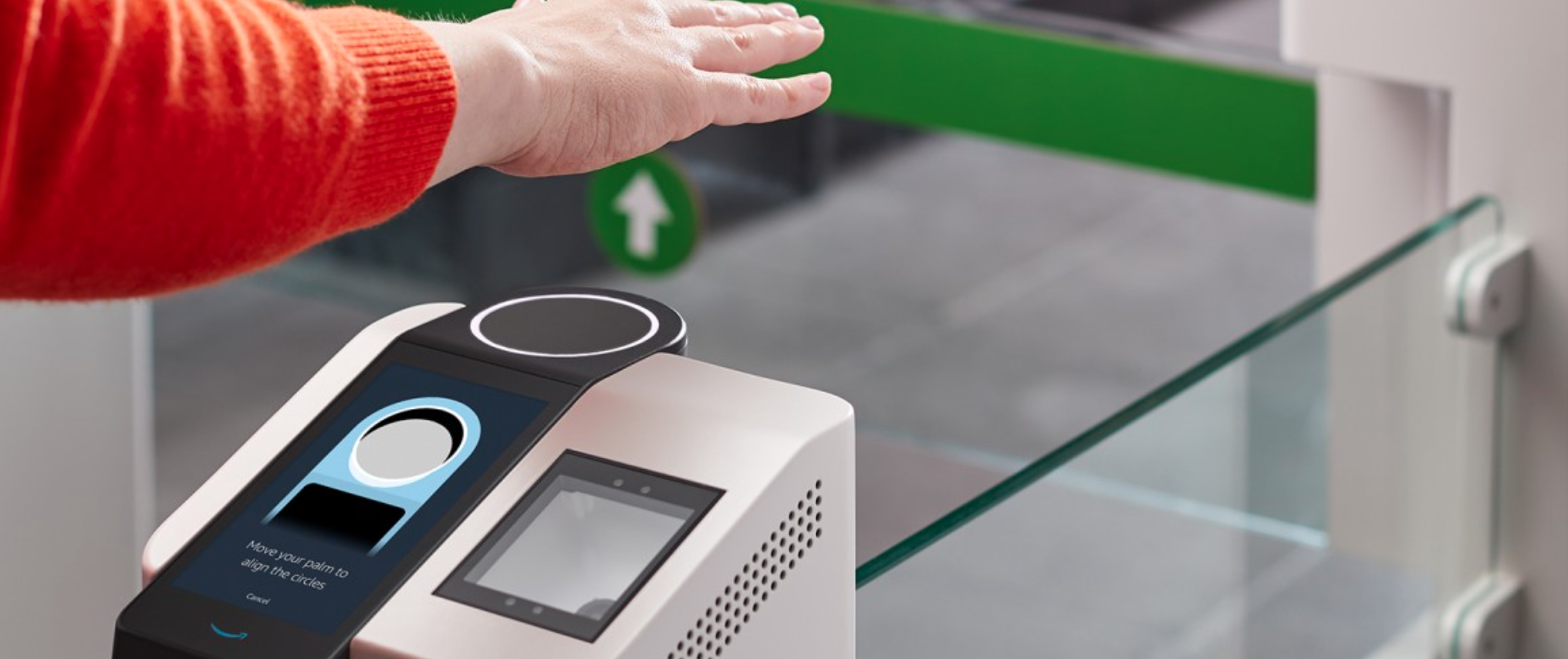
After a a deluge of new announcements during its hardware event last week, Amazon is coming to us with something new again this week.
The company revealed Amazon One, a contactless palm reading device to help users make a transaction in-store, present a loyalty card, or authenticate themselves for entry into a secure location.
Amazon is piloting the new devices in select Amazon Go stores, concept stores that offer consumers a checkout-free shopping experience by using AI to track what they place in their cart. The Amazon One terminals will be offered as an option for consumers to authenticate themselves upon entering the store.
There is a slight bit of friction involved. Upon arriving at the store, the shopper enters their credit card into the Amazon One terminal, hovers their palm over the device, and follows prompts on the screen that associate their card with their unique palm print. Shoppers can enroll with one palm or both.
After enrolling, shoppers can use their palm print to enter Amazon Go stores. In the coming months, Amazon One will be available at additional Amazon stores, as well.
“[W]e believe Amazon One has broad applicability beyond our retail stores, so we also plan to offer the service to third parties like retailers, stadiums, and office buildings so that more people can benefit from this ease and convenience in more places,” said Dilip Kumar, Vice President of Physical Retail and Technology at Amazon.
The tech giant cited a handful of reasons for using a palm print over other biometrics. First, unlike many facial recognition solutions, humans can’t identify a person by simply looking at the palm of their hand. Also, unlike facial recognition, Amazon One requires users to make an intentional gesture by holding their hand up in front of the device. And, of course, the palm reader is contactless, easing fears about virus transmission.
If you’ve been following fintech for any length of time you’re likely aware that Amazon isn’t the first company using contactless palm print biometrics. Both iProov and Redrock Biometrics have been working in the space since 2011 and 2015, respectively.
As biometric authentication methods rise in popularity, we’ll likely see palm prints being the body part of choice for authentication. That’s because, in addition to Amazon’s point regarding the ability to recognize others’ palm prints, it is also much more difficult to spoof someone else’s palm than it is to spoof their fingerprint of face.
